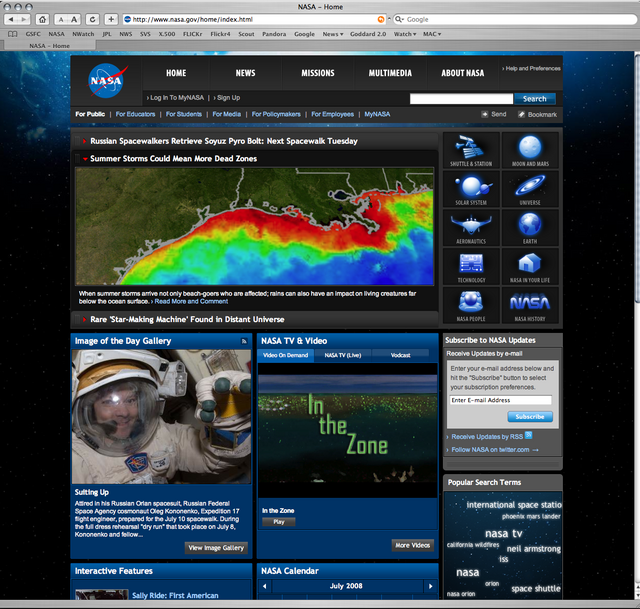Top Qs
Timeline
Chat
Perspective
Web page
Content provided by a website From Wikipedia, the free encyclopedia
Remove ads
A web page (or webpage) is a Web document that is accessed in a web browser.[1] A website typically consists of many web pages linked together under a common domain name. The term "web page" is therefore a metaphor of paper pages bound together into a book.

Navigation

Each web page is identified by a distinct Uniform Resource Locator (URL). When the user inputs a URL into their web browser, the browser retrieves the necessary content from a web server and then transforms it into an interactive visual representation on the user's screen.[2]
If the user clicks or taps a link, the browser repeats this process to load the new URL, which could be part of the current website or a different one. The browser has features, such as the address bar, that indicate which page is displayed.
Remove ads
Elements
A web page is a structured document. The core element is a text file written in the HyperText Markup Language (HTML). This specifies the content of the page,[3] including images and video.
Cascading Style Sheets (CSS) specify the presentation of the page.[3] CSS rules can be in separate text files or embedded within the HTML file.
The vast majority[4] of pages have JavaScript programs, enabling a wide range of behavior.[3] The newer WebAssembly language can also be used as a supplement.[5]
The most sophisticated web pages, known as web apps, combine these elements in a complex manner.
Remove ads
Deployment
From the perspective of server-side website deployment, there are two types of web pages: static and dynamic. Static pages are retrieved from the web server's file system without any modification,[6] while dynamic pages must be created by the server on the fly, typically reading from a database to fill out a template, before being sent to the user's browser.[7] An example of a dynamic page is a search engine results page.
Security
The Hypertext Transfer Protocol (HTTP) is the way a web browser retrieves webpage content from a website. HTTP has two optional security features: encrypted mode (HTTPS) greatly reduces the possibility of eavesdropping by a third party,[8] while Content Security Policy protects against cross-site scripting attacks.[9] Both features are supported by mainstream web browsers, and many websites use them.
Remove ads
See also
References
Wikiwand - on
Seamless Wikipedia browsing. On steroids.
Remove ads
